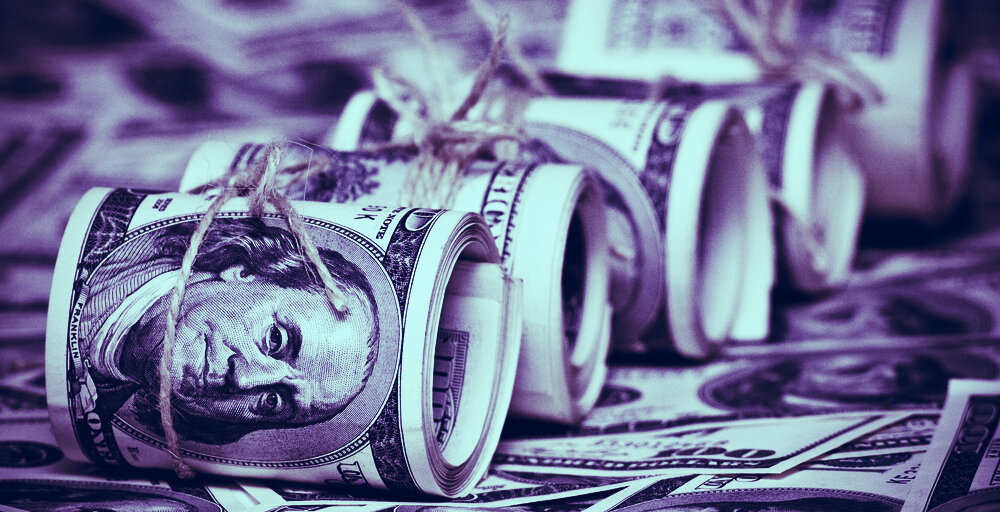Negative interest rates: Banks are coming for your money
Thought the money stashed away in your bank account was safe? Think again.
By Liam Frost
5 min read

As the coronavirus pandemic continues to curb economies around the world, many financial experts have begun to argue that the US Federal Reserve could soon move interest rates into the negative territory.
If that happens, banks will charge you for lending them money.
An article recently published by Narayana Kocherlakota, the former president of the Federal Reserve Bank of Minneapolis, fuelled this discussion by stating that “the Fed should go negative” starting this week.
While the concept may sound outlandish to people who are not too interested in macroeconomics, it could—at least in theory—act as a defibrillator for a flatlining economy during times of financial crises. In Switzerland and Denmark, negative interest rates are already commonplace.
Negative interest rates are supposed to incentivize people to spend or invest funds during deflationary periods instead of hoarding them. Since their savings will shrink in any case, the argument goes that it’s better to use them right away rather than accumulate and face guaranteed loss.
“Unprecedented situations require unprecedented actions. That’s why the U.S. Federal Reserve should fight a rapidly deepening recession by taking interest rates below zero for the first time ever,” wrote Kocherlakota in his op-ed for Bloomberg.
He said the central bank should cut interest rates to stimulate growth and job creation, yet the Fed currently has no plans to do so because it’s “giving up on unemployment reductions to help keep banks and their shareholders safer.”
Per the article, the Fed is also holding back because it’s concerned with financial stability—which is “completely made up,” believes Kocherlakota.
“[The central bank] is inventing a trade-off where none exists. [...] So, the Fed is left no (sic) good argument against going negative. Terrifyingly high unemployment and potentially rapid disinflation are powerful arguments in favor,” he wrote, urging “Next week, the Fed should take interest rates at least a quarter percentage point below zero.”
US President Donald Trump had also brought this topic up at the beginning of the year—way before the outbreak reached its current scope.
“We’re forced to compete with nations that are getting negative rates, something very new. Meaning, they get paid to borrow money, something I could get used to very quickly. Love that,” Trump said during the World Economic Forum in Davos back in January.
No negative rates on Bitcoin
Unsurprisingly, many financial experts who are known in the crypto sphere said they’re not big fans of the idea. In April, veteran cryptocurrency trader Peter Brandt pointed out that the Fed is on its way to negative rates.
“U.S. Fed driving right down the middle of the road that leads to negative interest rates,” he said.
Bitcoin educator Jimmy Song also noted that banks’ fiat money is essentially debt in itself—so of course, they would want to create more of it.
“Why would the Fed want negative rates? Central bank fiat money is debt and they can't print more if no one wants to borrow. Negative rates spur more money printing through borrowing which inevitably goes to big corps and rich people. Sick of this? Bitcoin is the cure,” he tweeted.
Countries around the world are already massively expanding their debts to fight the coronavirus, with worldwide fiscal relief measures amounting to over $8 trillion. The US debt alone has exceeded $24 trillion recently as the Federal Reserve is injecting unprecedented amounts of money into the economy, trying to counter the impact of the pandemic.
Though it seems like Jameson Lopp, cypherpunk and CTO at key security company Casa, has already found the ultimate way to stop banks from indebting you and taking your money—you just need to become your own bank.
“Can't get subjected to negative interest rates when you're being your own bank…” he tweeted.
If only there was a way how.
Get crypto news straight to your inbox--
sign up for the Decrypt Daily below. (It’s free).
Recommended News
Decrypt-a-cookie
This website or its third-party tools use cookies. Cookie policy By clicking the accept button, you agree to the use of cookies.
